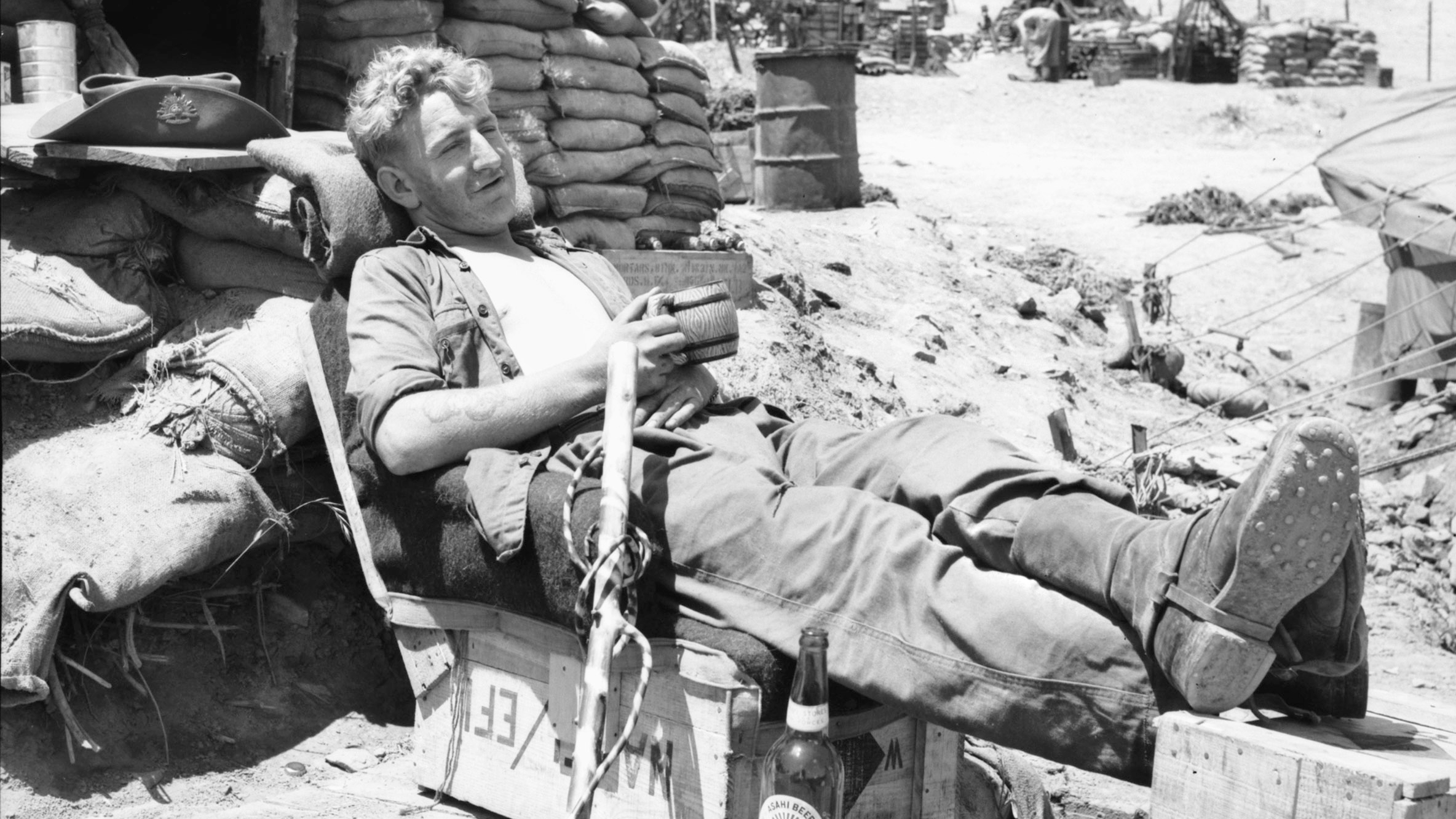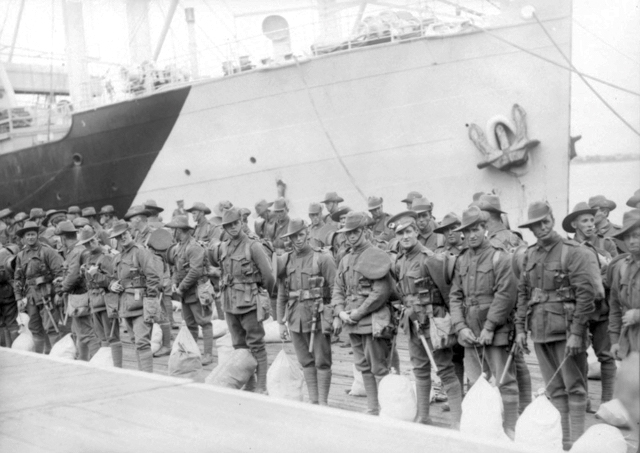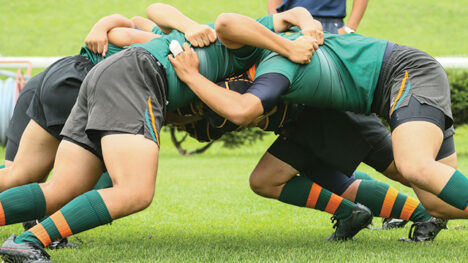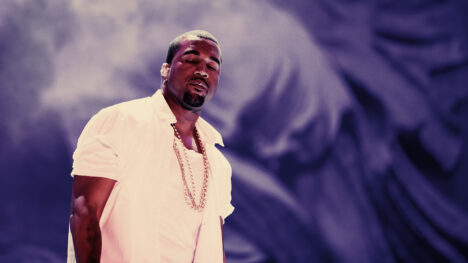Anzac soldiers speak
November 1, 2018

I have a long daily commute to and from work between my home in the Blue Mountains and the Australian College of Theology in Sydney. In many ways it is the best part of my day; I get to do what I like doing without interruption. For the last couple of weeks this reading time has been more than usually pleasurable as I have read two very good books, one of which is Daniel Reynaud’s Anzac Spirituality: The First AIF Soldiers Speak.
The first thing is that it tackles a big subject; one that really matters and warrants our attention. While it looks like a micro-study of the soldiers of the First Australian Imperial Force (AIF), in fact the ultimate subject is the Great War of 1914–1918. However construed, the Great War was genuinely a world-historical event which cast its “long shadow” over the century to follow. Questions abound. How did it happen? What was at stake? What was it like to live through? In its own way Reynaud’s book contributes to the answers to these large questions.
He foregrounds the soldiers of the First AIF—a highly significant group of men called upon actually to fight the war—and spotlights the spiritual component of their lives. The chapters seemed to get better as I worked my way through; the subject matter became more and more gripping. The account begins with the “enforced spirituality” of “compulsory church parades,” but moves on to “spirituality of choice,” the group and personal practices that expressed what was truly believed and lived. It next treats responses to the ethical dilemmas of war in “God of Battles” before moving to the everyday spiritual beliefs of the men and how these worked out in the extraordinary lives they were obliged to live under fire. Then there is a chapter on the chaplains and the challenges they faced, but alongside of it is another on the non-formal, less structured beliefs of the men. I like this movement from the official to the unofficial, from the compulsory to the voluntary, from the outward to the inward, from the orthodox and defined to the heterodox and inchoate. It seems to me to be a method for establishing the truth, for getting at the reality, of the spirituality of the men of the First AIF.
This concentration on the rank and file is unusual in the literature on the religion of Great War soldiers. It is much more common to focus on the officers and the chaplains. As I read the way the war was experienced in the training camps and at the front, I felt that I was getting to know the men of the First AIF. It is not hard to see why. The book’s apt sub-title is The First AIF Soldiers Speak. They do indeed! Reynaud has given them a voice through extensive quotation. Here’s one example from June 24, 1917 when Corporal Wilfred Denver wrote from a Roman Catholic standpoint:
If I should be killed I go to a much happier world than this. When I see thousands dying all around me day after day I have a different view of life to what you people have. You would think it terrible if I was killed but I am quite unconcerned about it. While I am in this world I must fight for justice and destroy the wicked even though I risk my life in doing so. I was born of this nature and it is impossible to do otherwise.
This at least is how one high-minded young man faced up to the ever-present prospect of death—or at least how he said he did to his people at home.

Other readers will find their own favourites. After all, there are 260 of these biographies from which to choose—an impressive feat of close, detailed research.
And, to come to the central claim of the book, many of the men of the First AIF were religious—in different ways and in different degrees. Reynaud has given us a fuller portrait of the spiritual dimension of life in the First AIF. We see it in Bible-reading, praying and hymn singing, voluntary church attendance and fellowship groups, wrestling with the temptations of new-found freedom and the low ethical standards of service life, belief in the righteousness of their cause, questioning of and even impatience with the shibboleths of peace-time religion, signs of puzzling over the moral ambiguities of the conflict, and even assigning a metaphysical dimension to the process of modern warfare.
At this point I should say that I like the way the book has been written. First, it is grounded in research that is enterprising and comprehensive. A long list of newspapers—many of them from remote and out-of-the-way places (who would have thought of using the Kyabram Free Press and Rodney and Deakin Shire Advocate?)—take their place alongside mainstream city and denominational publications and the surviving diaries and letters of servicemen as the primary sources of the investigation.
And second, Anzac Spirituality is an exercise in historical interpretation and should be judged as such. I find that the assessment of the evidence is judicious, neither exaggerated nor triumphalist. Spirituality is identified, but certainly not overstated. Grounded in a rich strain of evidence, measured in its views, focused on the past and not on the present, this in my judgment is good history, which was pleasurable and rewarding to read as I made my daily trek from Leura to Sydney and back again.
Of course, Reynaud is not the first historian to address the subject of the religion of Australian Great War soldiers. The pioneer was Bill Gammage, who opined that “the average Australian soldier was not religious.” This view was challenged almost 20 years ago by the American scholar Bob Linder, who discovered the presence in the ranks of “the godly digger.” Reynaud’s extensive research builds on Linder’s work and considerably nuances it. Reynaud calculates that at least 20 per cent of the men of the First AIF evinced a degree of spirituality during their service lives. This should hardly surprise us. At the time almost 100 per cent of the adult Australian population declared in anonymous censuses that they believed in God. There were also relatively high levels of church attendance and the 15 years before the war was a time of intense and successful revivalism. Indeed, it occurred to me as I read Reynaud’s book that the First AIF presents something of a snapshot of early 20th century Australian religion. It does appear that the overall tendency in terms of religious belief was for the men who survived to emerge from the war much the same as when they entered it, although possibly chastened and refined in their outlook. Nobody denies that some men lost their faith because of the ordeal of the war. But others found it. Reynaud’s book adds to the growing body of evidence that forces a reconsideration of the “loss of faith” narrative of the Great War and its larger context, the secularisation of the modern world.
Anzac Spirituality is a genuinely world-ranking book. I really appreciate it for its qualities as a work of history and its value as a resource for understanding a truly important aspect of our past and its meaning for the present.













